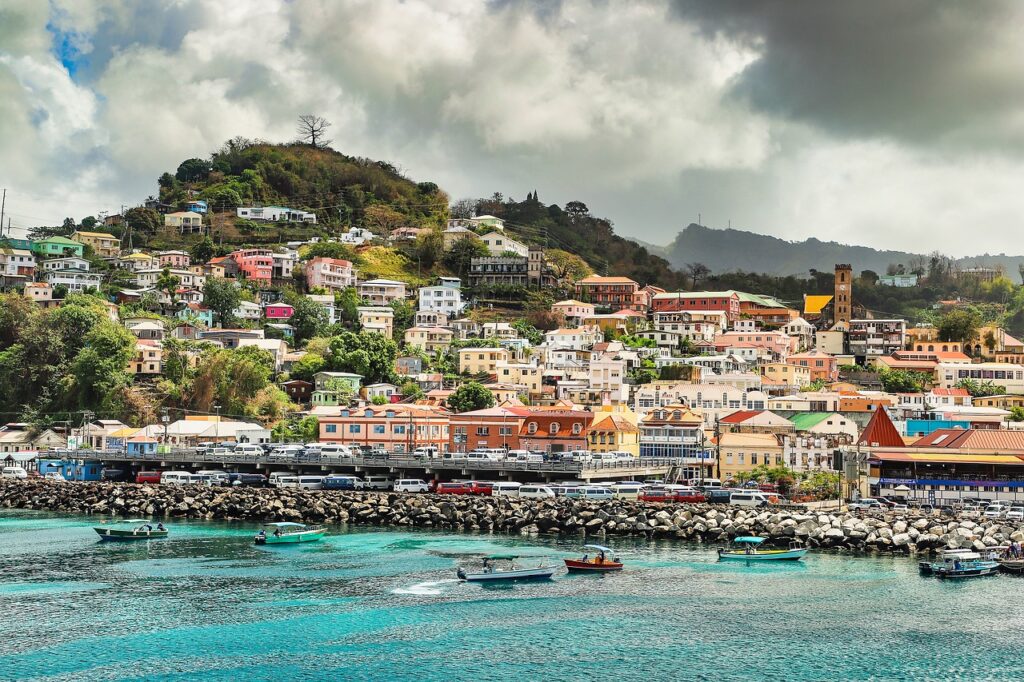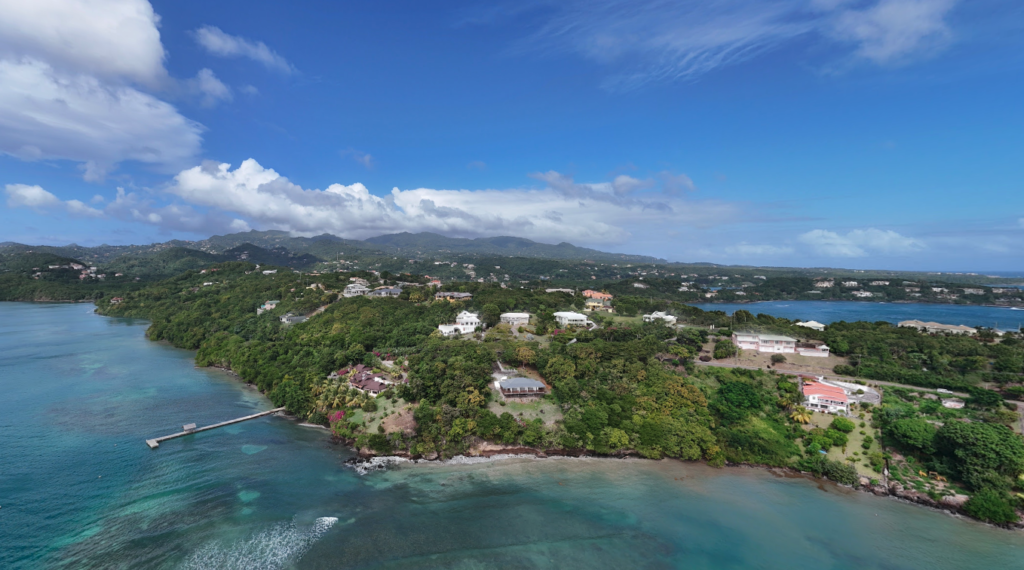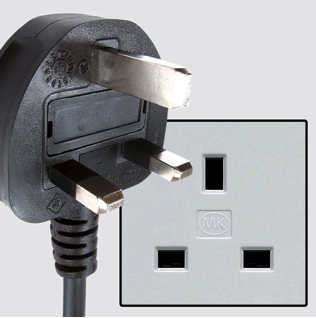Grenada / Gwenad – Let’s explore here

What’s it like in Grenada?
Grenada consists of three main islands and a set of some 600 smaller islands and islets. The three main islands are Grenada, Carriacou and Petite Martinique.
The country is located in the Caribbean, and is a relatively small country. It’s just a bit larger than Malta or the Isle of Wight, England, UK, being approximately 21 miles (34 km) long and 12 miles (19 km) wide.
It mostly consists of mountains, being part of a volcanic chain, and the highest point is Mount Saint Catherine, at 2,760 ft (840 m) above sea level.
Grenada’s population is around 125,000 (2021) and its capital, St. George’s is home to around 34,000 people. Carriacou is home to around 6,000 people and Petite Martinique, around 900 people. The country relies heavily on tourism like many other Caribbean islands.

A bit about the history of Grenada
Pre-Colonial Era
Before European colonisation, Grenada was inhabited by the Carib and Arawak peoples. These indigenous groups lived on the island for centuries, engaging in farming, fishing and trade. The island was known for its natural resources, including the fertile soil and abundant fish, which made it an attractive location for European settlers.
European Discovery and Colonisation
Christopher Columbus first encountered Grenada in 1498 during his third voyage to the Americas. The island was initially claimed by Spain but was largely ignored for several decades. In 1609, the French began to settle on the island, and by the mid 17th century, Grenada became a French colony. The French colonists established plantations, primarily growing sugar, and brought enslaved Africans to work on these plantations.
British Control
In 1763, following the Seven Years’ War, Grenada was ceded to Britain by France under the Treaty of Paris. The British took control of the island and developed its sugar industry, further increasing the demand for enslaved African labour. The island remained under British rule for nearly two centuries, with plantation agriculture being the backbone of its economy.
Slavery Abolition and Post-Colonial Era
Slavery was abolished in Grenada in 1834, and the island’s economy began to transition. While agriculture, especially nutmeg and cocoa, remained important, Grenada faced challenges such as economic instability, labour unrest, and changing global market conditions. The early 20th century saw continued political and social struggles, with the rise of labour movements pushing for better conditions for workers.
Path to Independence
Grenada began moving toward independence in the mid 20th century. In 1967, it was granted full internal self government, and in 1974, Grenada became an independent state within the British Commonwealth. The country’s independence marked the beginning of a new political era, but it was also a period of political unrest.
The 1979 Revolution and Aftermath
In 1979, a group of revolutionaries, led by Maurice Bishop, overthrew the government in a coup. Bishop’s new government sought to implement socialist reforms, including land redistribution and the expansion of social services. However, tensions within the government led to a military coup in 1983, and Bishop was killed. This instability attracted international attention.
US Invasion
In October 1983, the United States, along with a coalition of Caribbean nations, invaded Grenada, citing the need to protect American citizens on the island and to restore order. The invasion resulted in the defeat of the revolutionary forces and the establishment of a new government that aligned more closely with Western interests. The US intervention remains a controversial event in Grenada’s history.
Post Invasion Period and Recent Developments
Following the US invasion, Grenada has stabilised politically and economically. The country returned to democratic rule, and the economy, though still dependent on agriculture, has diversified. Grenada has also become a popular tourist destination, attracting visitors with its beautiful beaches, rich culture and history. Today, Grenada continues to be a member of the Commonwealth of Nations and maintains a stable, democratic government. However, the country still faces challenges, including economic dependence on agriculture, vulnerability to natural disasters, and the need for continued development in the face of global economic pressures.

Grenada road trip
Grenada is our sixth planned stop on our road trip through the islands of the Caribbean. Having explored Barbados, our next stop is Saint Vincent and the Grenadines.
Travelling overland between the islands is quite prohibitive due to the lack of transportation options. Travelling between different island countries via ferry is possible, however, ferries only operate between some islands. Chartering private boats between islands is also possible, although travelling with a car in this way is prohibitive. Flying is another option, although again, flights only operate between some islands.
Map of our road trip through Grenada

This is a map of our planned route around the island of Grenada, starting and ending in the capital, St. George’s.
Weather in Grenada
When is the best time to visit Grenada?
The best time to visit Grenada is from December to May. During these months, the islands have 8 hours of sunshine per day and rainfall of 2.6 – 2.8 inches (65 – 70mm) per month. The temperature ranges from 19 – 32°C (66 – 90°F).
When is the worst time to visit Grenada?
The worst time to visit Grenada is from June to November. During these months, the islands still have 8 hours of sunshine per day. However, humidity rises and it rains an average of 4.0 inches (100mm) per month at the coast, more inland. The temperature ranges from 19 – 32°C (66 – 90°F).
Hurricane Season in the Caribbean
Hurricane season in the Caribbean runs from June 1 to November 30. Storms tend to be more frequent and more severe in the latter half of the season.
Hurricanes are least likely during December, January and February.
Travel in and around Grenada
Travelling between Grenada and Carriacou
Ferries travel between the islands every day except Sundays and bank holidays, via the Osprey Lines ferry. The ferries are for foot passengers and take around 1½ hours each way.
Travelling between Carriacou and Petite Martinique
Ferries travel between the islands Mondays – Fridays only, excepting bank holidays, via the Osprey Lines ferry. The ferries are for foot passengers and take around ½ hour each way.
Ferries to other Caribbean island countries from Grenada
There are no longer any ferries to other island countries in the Caribbean from Grenada (2024). The ferry company MV Pride used to travel between Carriacou and Union Island in the Grenadines, however ceased operations due to Hurricane Beryl in 2024.
Boats may still be available, such as the M/V Lady JJ, which used to run between Union Island in St Vincent and Carriacou in Grenada.
What’s it like to drive in Grenada?
They drive on the left hand side of the road in Grenada. Car hire is available in both Grenada and Carriacou. However the roads are, in the main, in poor condition.
We’ve also created a dedicated page to driving abroad, which you might find helpful 🙂
What currency do they use in Grenada?
In Grenada they use the Eastern Caribbean dollar. Cash is widely used. The use of credit / debit cards is widely accepted in major cities, although not in rural areas. Travellers cheques are not accepted in the main. There are ATMs in cities, although not all accept foreign issued cards.
You should make yourself aware of the amount that your bank charges you for using credit and debit cards abroad. Often credit cards are cheaper for purchasing items directly, and for withdrawing cash from ATMs.
What language do they speak in Grenada?
They speak English and Creole in Grenada. English is spoken in tourist areas.
What time zone is Grenada in?
Remember, when you’re planning your next trip to take a look at what time zone it’s in.
Do I need a visa to visit Grenada?
We’ve created a dedicated, more comprehensive page on visas, which you should find helpful. Check it out!
Is wild camping legal in Grenada?
No, wild camping is not widely accepted in Barbados.
What plug / socket type do they use in Grenada?
In Grenada they use plug / socket type G.

In Grenada they use plug / socket type G.
Health issues in Grenada
Is it safe to drink water in Grenada?
Yes, it is safe to drink tap water in Grenada. Bottled water is also readily available across the country.
What vaccinations are required for Grenada?
This NHS website is kept up to date with all relevant information on vaccinations in Grenada.
Phones in Grenada
What is the country calling code for Grenada?
The country calling code for Grenada is +1 473
What are the emergency phone numbers in Grenada?
- The emergency number for police in Grenada is: 911
- In Grenada, the emergency number for ambulance is: 911
- The emergency number for fire in Grenada is: 911
If you’ve got some useful info that you’d like to share, let us know!
And don’t forget to check out all the other pictures!
